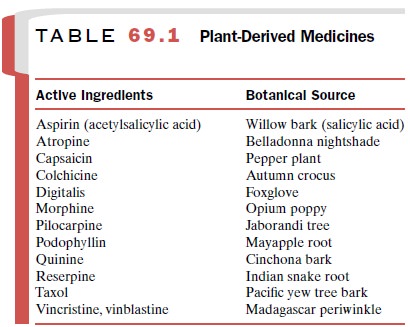Chapter: Modern Pharmacology with Clinical Applications: Herbal Medicine
Herbal Medicine
Herbal Medicine
Herbal therapies have become
an integral part of the American health care scene. Since 1991, public use of
herbal products has increased quite markedly, with over $5 billion spent
annually. This does not include the many (up to 25%) pharmaceutical products
used in conventional practice that originally were, and in some cases still
are, derived from plants (Table 69.1). The perennial appeal of herbs may stem
from their “natu-ral” origin, giving them the reputation of being some-how
safer and better tolerated than prescription drugs. In addition, they are
available without prescription, of-ten at much lower cost. For much of the
world’s popu-lation, herbal treatments remain the first and some-times the only
available treatment. Proponents of herbal therapy also state that the multiple
compounds found in most herbal preparations have the advantage of acting synergistically; that is, they act in
concert to produce a more enhanced effect than would a single isolated
component. An example is St. John’s wort (Hypericum
perfoliatum), which contains not only hy-pericin, the ingredient it is
usually standardized for, but also hypaphorine and a variety of other
compounds. It is now believed that these other ingredients, far from being
extraneous, contribute significantly to the herb’s effectiveness.

The study of natural product
medicines is termed pharmacognosy, which
includes the study of herbal medicine.
The resurgence of herbal medicine use has once again made pharmacognosy
extremely relevant to the medical curriculum.
Related Topics